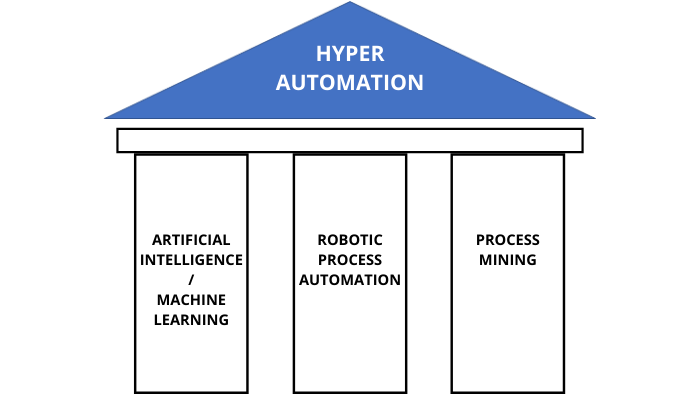Insurance industry is highly process-centric and requires insurance companies to monitor their business processes closely for efficiency, accuracy and costs. This is the reason why most of the Insurance companies are automating their processes using Robotic Process Automation (RPA) and other technologies. Even though repetitive tasks are being automated, there’s a gap between the expected result and the outcome. There are many processes which cannot be automated and where manual intervention is required. How can we address this automation paradox and add value to the complete value stream? This is where Hyper-automation fits in.
Gartner has listed Hyper-automation as its top #1 strategic technology trend of 2020 in its recently published study “Top 10 Strategic Technology Trends for 2020”.

Digitization of processes, improved connectivity with the help of the Internet, and smart machines with Artificial Intelligence have led the world into an age of Hyper-automation.

Hyper-automation includes:
- AI/ML skills such NLP (Natural Language Processing) /ASR (Automated Speech Recognition) and AI computer vision.
- Automated tools for process discovery to show you what can and should be automated.
- Advanced analytics to measure and demonstrate automation and its impact.
Hyper-automation in the Insurance space
Insurance processes such as underwriting, claims processing, and policy servicing are highly repetitive and manual activities. Hyper-automation helps enterprises to access data from disparate systems and automate repetitive manual processes.
Claims Processing
Claims processing requires companies to gather information from several sources, verifying the gathered data and process the claims. Current claims systems lack both reliability and versatility and have hit practical limits which have resulted in excessive levels of manual processing. This, in effect, inhibits productivity and versatility, slows down service and affects the customer experience.
Using Hyperautomation, RPA plus AI can solve these problems in a few minutes, quickly evaluating fraud or damage and approving or rejecting claims.
Underwriting
Underwriting includes consideration of the risks and exposures of customers. It includes collecting information from different outlets and assessing the risks associated with the policy. Underwriting a complex policy involves scrambling and analyzing large amounts of data and determining the risks involved before arriving at a conclusion. This typically takes 2-3 weeks.
Hyperautomation addresses the current challenges in data collection process across external and internal channels. This greatly reduces the time required for underwriting.
Benefits of Hyperautomation
Hyperautomation has the potential to deliver the following key benefits:
- Greater productivity & turnaround time
- Improved accuracy across the value stream
- Better versatility and adaptability
- Better acumen & business insights
- Greater compliance and reduced risk
- Increased employee satisfaction and motivation, as they can now be assigned to more valuable roles
Conclusion
Hyperautomation not only validates automation but elevates it to show how the combination of RPA, process mining and disruptive technologies such as AI/ML and more can be used together to deliver end-to-end automated solutions. CTOs can leverage hyper-automation along with other available technologies to realise the benefits outlined above in their journey of business transformation. As is the case with all new disruptive technologies, CTOs and CIOs need to carefully assess which processes are suitable candidates in their context.
Synergy’s consultants bring vast experience in automation in the insurance sector. ASTRA is Synergy’s award winning automation framework that helps insurers to identify quick wins and draw up a sustainable roadmap for enterprise wide use of automation.


